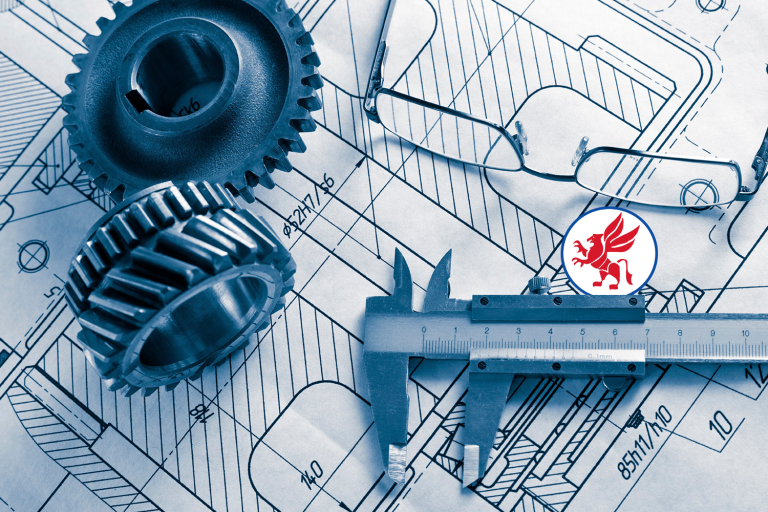In today's dynamic and competitive construction landscape, Architecture, Engineering, and Construction (AEC) businesses are constantly seeking innovative solutions to optimize their processes and drive efficiency. One such solution gaining traction is BIM outsourcing services. Outsourcing BIM tasks to specialized service providers offers AEC businesses the opportunity to access a wealth of expertise and resources while minimizing costs and streamlining workflows. In this blog post, we delve into the realm of cost-effective BIM outsourcing services for AEC businesses, exploring the benefits, considerations, and best practices associated with outsourcing BIM tasks.
A “Panoramic View” of BIM Outsourcing Services
BIM outsourcing refers to the practice of contracting external service providers to handle various tasks related to Building Information Modeling (BIM) for Architecture, Engineering, and Construction (AEC) projects. These tasks may include BIM modeling, clash detection, quantity takeoff, documentation, and other related services. BIM outsourcing providers typically have specialized expertise, resources, and software tools to efficiently execute these tasks, often at a lower cost compared to in-house resources. By outsourcing BIM tasks, AEC firms can leverage external expertise to enhance their project workflows, streamline processes, and optimize project outcomes.
BIM is a digital way to show what a building or project will be like. People work together on the design, simulation, and management of the project using BIM throughout its life. BIM outsourcing services meet the growing demand for BIM in construction and design projects, so companies don't need their own BIM team.

How Does BIM Outsourcing Services Work?
Here's how BIM outsourcing services typically works:
Assessing the Project and Defining the Scope
First, the person in charge of the project figures out what BIM services are needed, like making 3D models and finding clashes, by looking at what the project requires and how much detail is needed.
Choosing a Partner
Then, they pick a company with experience in BIM and a good history. They look at different companies, consider their skills, and see what their previous clients have said.
Making Agreements
Once they decide on a partner, both sides sign a contract. This paper explains all the project details, when things should happen, how data will be kept safe, and how payments will work.
Sharing Data and Working Together
The project leader gives the partner data like drawings. They use tools that help them talk and work together well.
Creating BIM and Checking for Quality
The partner makes BIM models and checks them, while the project leader looks at what they've done and gives advice on changes if needed.
Staying in Touch and Watching Progress
It's really important to talk a lot and see how things are going. This helps the project go well and finish on time, doing what it's supposed to do.

Amazing Benefits of BIM Outsourcing Services
Cost Savings and Efficiency Gains
Outsourcing BIM tasks to specialized service providers often results in significant cost savings for AEC businesses. By leveraging the expertise of external providers, firms can avoid the expenses associated with recruiting, training, and retaining in-house BIM teams. This cost-effective approach enables AEC businesses to allocate their resources more efficiently and invest in other areas of their operations.
Access to Specialized Expertise and Resources
BIM outsourcing services provide AEC businesses with access to a pool of specialized expertise and resources that may not be available in-house. Outsourcing providers typically employ skilled professionals with extensive experience in BIM modeling, software proficiency, and industry knowledge. Additionally, outsourcing firms often have access to advanced software tools and technologies, enabling them to deliver high-quality results efficiently. By tapping into this expertise and resources, AEC businesses can enhance their project workflows, improve quality, and achieve better project outcomes.
Scalability and Flexibility in Project Staffing
Outsourcing BIM tasks offers AEC businesses scalability and flexibility in project staffing. External providers can quickly scale their teams up or down based on project demands, allowing firms to meet fluctuating workload requirements without the need for hiring or layoffs. This flexibility enables AEC businesses to take on more projects, expand their service offerings, and respond to market opportunities more effectively. Additionally, outsourcing allows firms to access specialized skills and resources for specific projects or tasks, without the long-term commitments associated with hiring in-house staff.
Focus on Core Competencies and Strategic Priorities
By outsourcing BIM tasks, AEC businesses can focus on their core competencies and strategic priorities. Outsourcing allows firms to delegate time-consuming and resource-intensive BIM tasks to external providers, freeing up internal resources to focus on higher-value activities such as design innovation, client engagement, and project management. This strategic approach enables AEC businesses to enhance their competitive advantage, differentiate themselves in the market, and drive business growth. Overall, outsourcing BIM tasks allows firms to streamline their operations, optimize their resources, and achieve their business objectives more effectively.

Factors to Consider When Choosing BIM Outsourcing Services
Reputation and Track Record of the Outsourcing Provider
When selecting BIM outsourcing services, it's essential to consider the reputation and track record of the outsourcing provider. Look for providers with a proven history of delivering high-quality BIM services and successful project outcomes. Check references, reviews, and testimonials from past clients to gauge the provider's reliability, professionalism, and customer satisfaction levels.
Quality of Services Offered and Adherence to Industry Standards
Ensure that the provider has skilled professionals with expertise in BIM modeling, software proficiency, and industry knowledge. Additionally, assess the provider's adherence to industry standards and best practices in BIM. Look for certifications, accreditations, and affiliations with industry organizations that demonstrate the provider's commitment to maintaining high standards of quality and professionalism in their services.
Pricing Structure and Transparency
Evaluate the pricing structure and transparency of the outsourcing provider to ensure that it aligns with your budget and expectations. Look for providers that offer competitive pricing and transparent billing practices. Beware of providers that offer significantly lower prices than their competitors, as this may indicate subpar quality or hidden costs. Seek clarity on pricing details, including any additional fees or charges, to avoid surprises later on. A transparent pricing structure enables you to budget effectively and make informed decisions about outsourcing BIM services.
Communication and Collaboration Capabilities
Effective communication and collaboration are essential for successful BIM outsourcing partnerships. Assess the provider's communication and collaboration capabilities, including their responsiveness, accessibility, and willingness to collaborate. Look for providers that prioritize clear and open communication channels, regular project updates, and proactive problem-solving. Consider factors such as time zone differences, language barriers, and cultural considerations that may impact communication and collaboration with offshore providers.
What is better: BIM In-house or Outsource?
Figuring out whether to do BIM work inside your organization or get help from outside depends on a few things and what your organization needs and can do. Both ways have good and not-so-good parts, so it's important to look at some things before you decide:
What You Know and Have
If your organization already has people who are good at BIM and all the things like computers and software to do it, doing BIM inside might be cheaper and work better. But if you don't know much about it or don't have what you need, hiring a special BIM company might be a good idea.
How Big and Complicated the Projects Are
Think about how hard and big the projects you work on are. If they're small and easy, you could do BIM in your own place. But if they're big and really complicated, a special company might be better because they know a lot about those tough things.
Money Matters
Look at how much it costs to do BIM on your own, like getting software and teaching people, and compare it with how much it costs to pay other BIM companies. Sometimes, paying others could save money, especially if your group is small or only does BIM now and then.
Keeping Things Safe
Think about how important the information you use is. Using BIM indoors can make things safer, especially when you're working on projects with confidential information. But the good companies that do BIM for others also know how to keep things safe, so make sure they're safe before you choose them.
Working Fast
When you're in charge of doing BIM, you can be faster and change things easier. If you need to be quick, it might be better to do things inside.
In general, there's no one right answer about whether doing BIM inside or getting help from outside is better. Both ways are good in different ways. To choose right, think about what your organization can do, what the projects need, how much money you can spend, and what you want to do in the future.
Types of BIM Outsourcing Services Available
Full-Service BIM Outsourcing
This encompasses comprehensive support for all BIM-related tasks throughout the project lifecycle. This includes BIM modeling, clash detection, quantity takeoff, documentation, coordination, and project management. With full-service outsourcing, AEC businesses can delegate all aspects of their BIM requirements to an external provider, allowing them to focus on core activities while benefiting from expert support in BIM implementation and management.
Specific Task-Based Outsourcing
It involves delegating individual BIM tasks or processes to external providers. This approach allows AEC businesses to tailor their outsourcing requirements to their specific project needs. Common tasks outsourced on a task-based model include BIM modeling, clash detection, quantity takeoff, and documentation. Task-based outsourcing provides flexibility and scalability, enabling firms to access specialized expertise for specific project requirements without committing to a full-service outsourcing arrangement.
Offshore vs. Onshore Outsourcing Options
Offshore outsourcing involves contracting BIM services from providers located in different countries or regions, typically to take advantage of lower labor costs. Onshore outsourcing, on the other hand, involves partnering with providers within the same country or region. Offshore outsourcing offers cost savings but may present challenges related to communication, time zone differences, and cultural differences. Onshore outsourcing offers closer proximity, cultural alignment, and potentially higher levels of communication and collaboration. Both options have their advantages and should be evaluated based on project requirements and priorities.

Why Outsource to Harmony AT Is the Cost-Effective Solution for AEC Businesses
Outsourcing BIM services to Harmony AT presents AEC businesses with a cost-effective solution that combines quality, efficiency, and value. With over 20 years of experience in the industry, Harmony AT offers a wealth of expertise and resources to meet diverse BIM outsourcing needs. Our comprehensive suite of services, including full-service BIM outsourcing and specific task-based outsourcing, caters to the unique requirements of each project. By outsourcing to Harmony AT, AEC businesses can access specialized expertise, streamline workflows, and optimize costs without compromising on quality or reliability. Additionally, our onshore outsourcing model ensures clear communication, seamless collaboration, and cultural alignment, fostering a productive partnership that delivers exceptional results. With Harmony AT as your outsourcing partner, you can trust that your BIM requirements are in capable hands, enabling you to maximize efficiency, minimize costs, and achieve success in your projects.
Come here to get the best by contacting us here.
Categories





